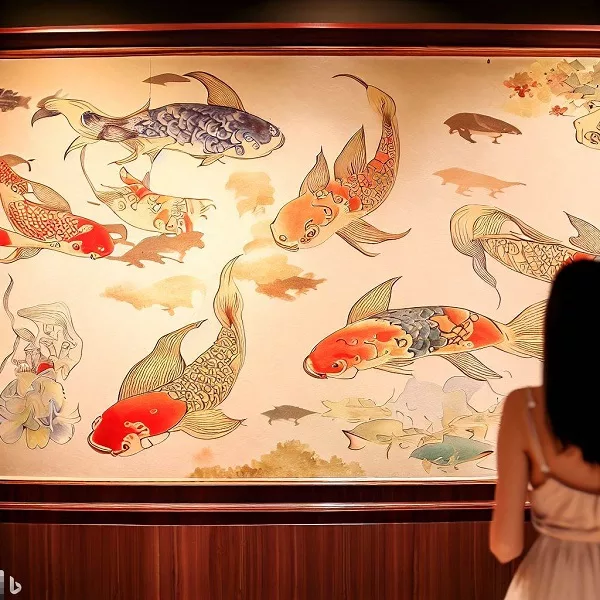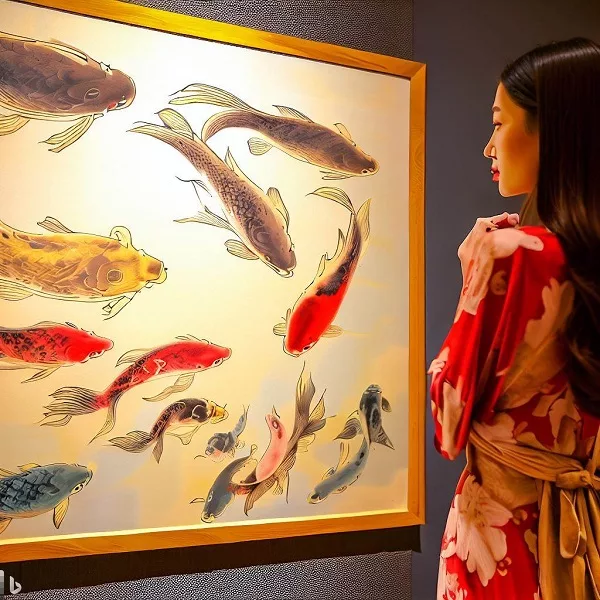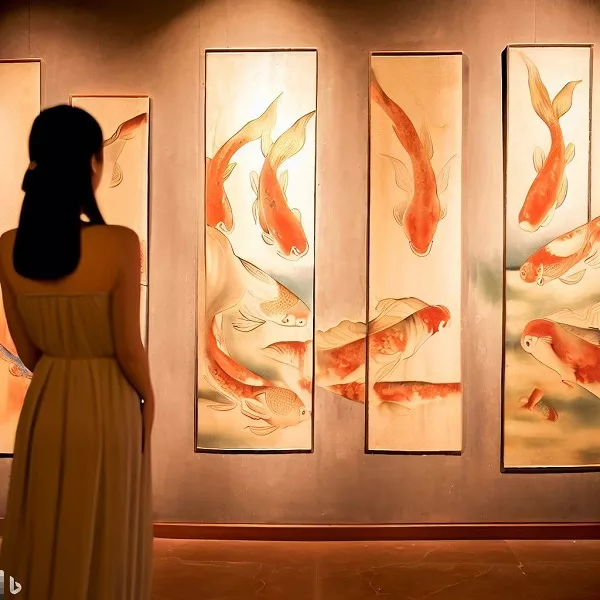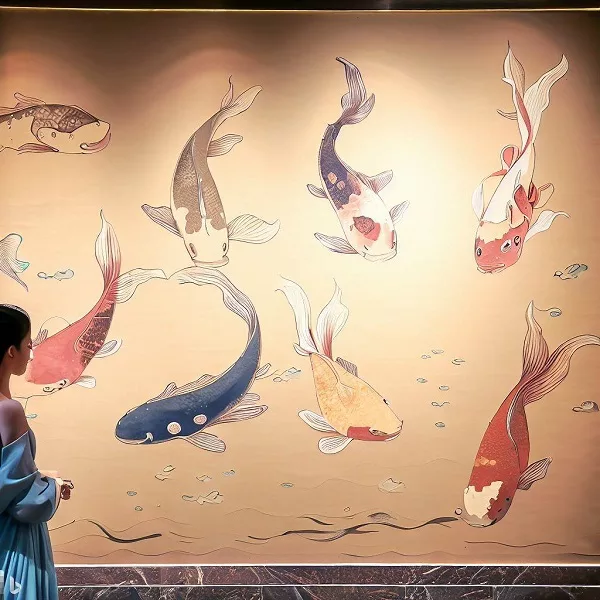



Koi fish have been a popular subject of art for centuries, with their vibrant colors and graceful movements inspiring artists all over the world. From ancient Chinese paintings to modern Japanese tattoos, the evolution of koi fish art has been a fascinating journey. In this article, we will explore the history of koi fish art and how it has evolved over the centuries.
Koi fish are a type of carp that were first bred for their colorful patterns in China over 2,500 years ago. In ancient China, koi fish were considered a symbol of good luck, and were often featured in art and literature. Chinese artists depicted koi fish in traditional paintings, often portraying them swimming upstream, which was seen as a symbol of perseverance and determination.
During the Tang Dynasty (618-907 AD), koi fish became a popular subject for decorative art. These fish were often depicted in large ceramic vessels and were used as decoration in gardens and courtyards. The Tang Dynasty was also known for its poetry and literature, and koi fish were often referenced in these works, symbolizing love, fidelity, and perseverance.
In Japan, koi fish became popular in the 17th century, when Japanese breeders began developing new varieties of koi with unique patterns and colors. During this time, koi fish were also incorporated into Japanese garden design, and were often depicted in woodblock prints and paintings. Koi fish were seen as a symbol of good fortune, and were believed to bring happiness and prosperity to the home.
One of the most famous examples of koi fish art is the Koi Pond at the Ryoan-ji Temple in Kyoto, Japan. The pond, which dates back to the 15th century, is home to a large population of koi fish, and is a popular tourist destination. The koi fish in the pond are known for their vibrant colors and patterns, and are a perfect example of the beauty of koi fish art.
In the modern era, koi fish art has taken on new forms, with artists using a variety of mediums to depict these beautiful fish. One popular form of koi fish art is the Japanese tattoo, or irezumi. Japanese tattoo artists have been depicting koi fish in their designs for centuries, with each fish representing a different meaning. For example, a koi fish swimming upstream symbolizes strength and determination, while a koi fish swimming downstream represents surrender and letting go.
Another popular form of koi fish art is the painting, with artists using watercolors and other mediums to capture the vibrant colors and patterns of these fish. Many artists today use koi fish as a symbol of perseverance, resilience, and transformation, with the fish representing the journey through life.
In conclusion, the evolution of koi fish art through the centuries is a testament to the enduring beauty and symbolism of these fish. From ancient Chinese paintings to modern Japanese tattoos, koi fish have captured the imagination of artists around the world. As we continue to appreciate the beauty of these fish, it is clear that koi fish art will continue to evolve and inspire for centuries to come.